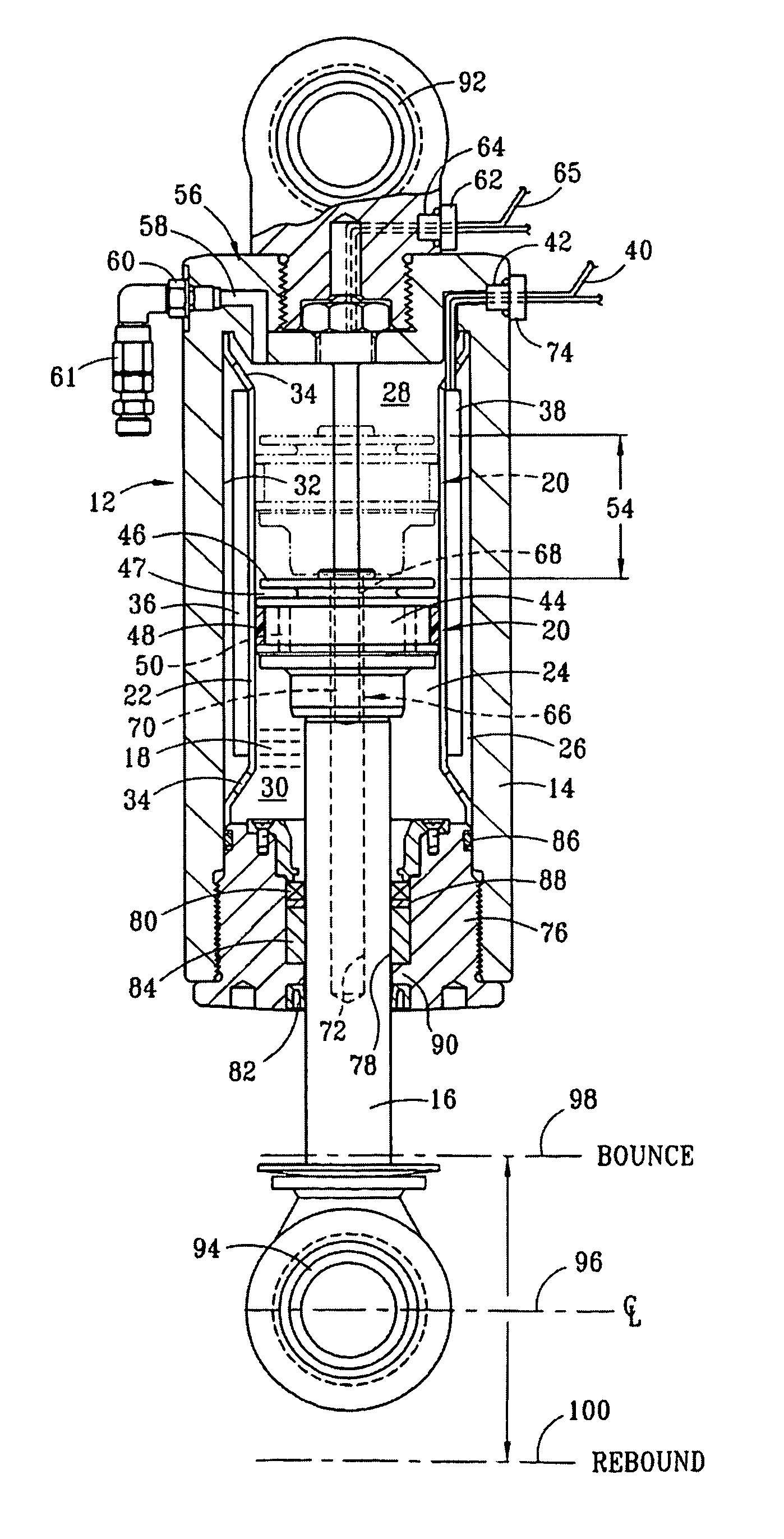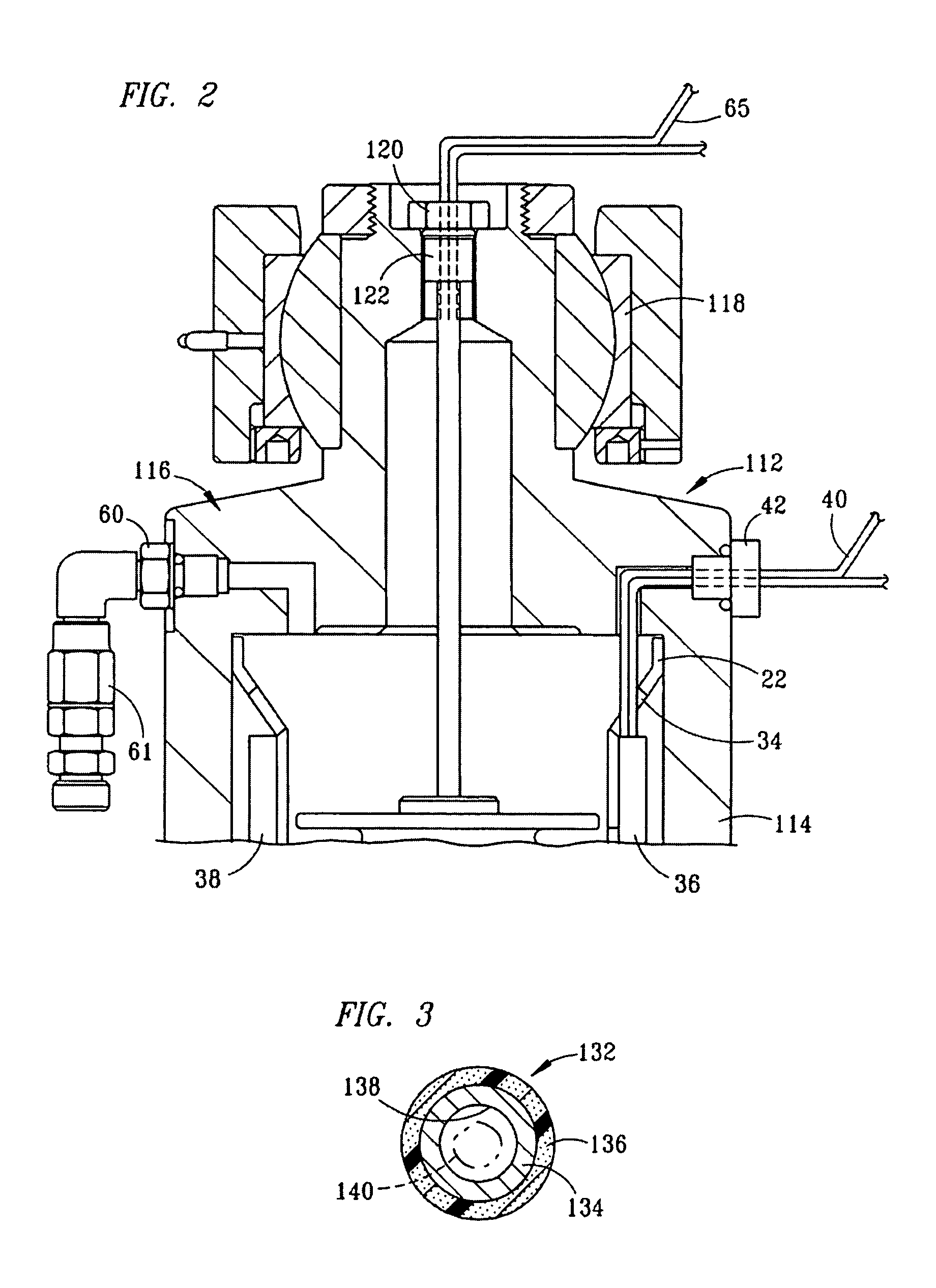Suspension strut for use with a compressible magnetorheological fluid
a magnetorheological fluid and suspension strut technology, applied in the direction of shock absorbers, magnetic bodies, transportation and packaging, etc., can solve the problems of reducing the life of the vehicle frame, affecting the cargo of passengers, and affecting the health of passengers,
- Summary
- Abstract
- Description
- Claims
- Application Information
AI Technical Summary
Benefits of technology
Problems solved by technology
Method used
Image
Examples
Embodiment Construction
[0025]FIG. 1 is a partial longitudinal section view of a strut 12 having a cylinder 14 and piston 16. Preferably, the piston member 16 is provided by a cylindrically-shaped rod, which provides a displacement member for displacing fluid within the cylinder 14. A compressible fluid magnetorheological (“MR”) fluid 18 is disposed within the cylinder 14, and pressure of the compressible fluid 18 within the cylinder 14 applies force across a cross-sectional area of the piston 16. A damper element 20 is secured to an inward end of the piston 16. A sleeve 22 is rigidly mounted within the cylinder 14 to define a primary fluid chamber 24 and a secondary fluid chamber 26. The primary fluid chamber 24 is preferably disposed interiorly within the secondary fluid chamber 26. The primary fluid chamber 24 has a first region 28 and a second region 30 defined on opposite sides of the damper element 20, with the first region 28 preferably being inward of the second region 30, defined relation to an ou...
PUM
 Login to View More
Login to View More Abstract
Description
Claims
Application Information
 Login to View More
Login to View More - R&D
- Intellectual Property
- Life Sciences
- Materials
- Tech Scout
- Unparalleled Data Quality
- Higher Quality Content
- 60% Fewer Hallucinations
Browse by: Latest US Patents, China's latest patents, Technical Efficacy Thesaurus, Application Domain, Technology Topic, Popular Technical Reports.
© 2025 PatSnap. All rights reserved.Legal|Privacy policy|Modern Slavery Act Transparency Statement|Sitemap|About US| Contact US: help@patsnap.com



